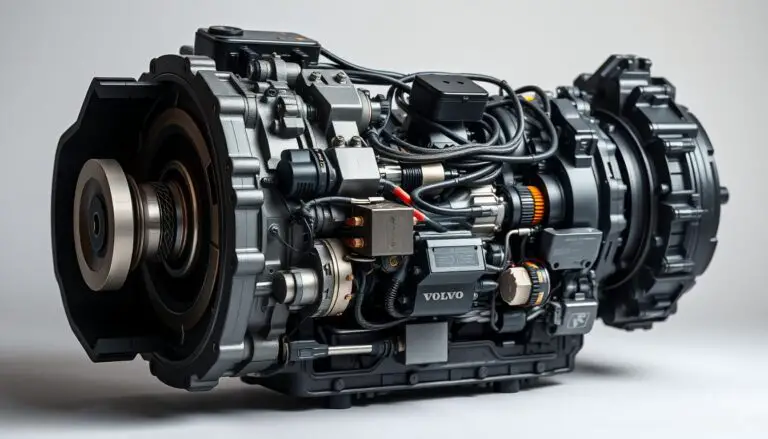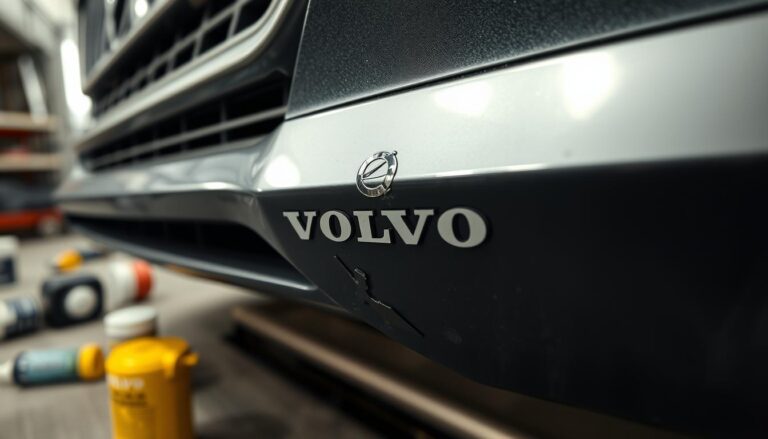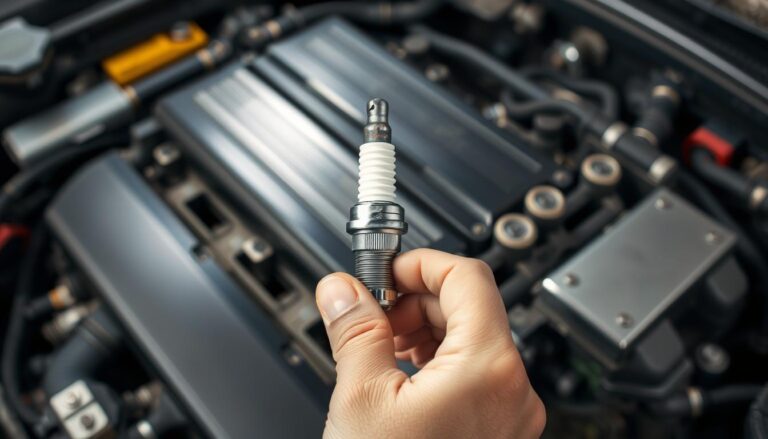Understanding your car’s electrical system up front saves time and money. Many modern models use two power sources: a main 12V unit for starting and electronics, and an auxiliary cell for the start/stop system. A dashboard alert reading “Start/Stop Service Required” often signals the auxiliary unit needs attention.
Typical 12V service runs roughly $45–$250, though final pricing depends on model, year, powertrain, and labor. Lifespan for the small 12V is about four to six years, while high-voltage packs in EVs and plug-in hybrids carry an eight-year/100,000-mile warranty.
Get a VIN-specific estimate today to avoid surprises from parts, placement (engine bay, trunk, under-seat), and required coding or resets. Choosing OEM fitment and authorized service helps protect warranty coverage and keeps the car operating like new.
Key Takeaways
- Modern systems often use a main 12V and an auxiliary start/stop unit.
- Expect 12V battery replacement prices roughly between $45 and $250.
- VIN-specific quotes account for placement, labor, and required resets.
- High-voltage packs typically have an 8-year/100k warranty; check manufacturer terms.
- Authorized service and OEM fitment preserve warranty and value.
- Schedule a quick diagnostic if you see electrical warnings to get clear pricing today.
Volvo Battery Replacement Cost: What Affects Your Final Price
What you pay often reflects the vehicle’s year, how the battery is packaged, and the level of wiring work needed.
Key cost drivers include model and trim, the chemistry specified (standard vs. AGM), and how easy it is to reach the unit in the engine bay or under a seat.
Model, packaging, and labor time
Higher-end models like the volvo xc90 often require higher-spec parts and more labor. Compact trims such as the volvo xc40 or XC40 usually have lower pricing when equipment levels are modest.
Typical 12V price range
Estimated service for a 12V unit commonly falls between $45 and $250. This range varies with parts quality, shop labor rates, and extra steps like coding or BMS resets.
Main vs. auxiliary service
Some vehicles carry an auxiliary start/stop unit. A dashboard message like “Start/Stop Service Required” can point to the auxiliary cell, but a diagnostic test confirms if the main or auxiliary needs replacement.
| Factor | Typical impact | Estimated price range |
|---|---|---|
| Model / Trim | Higher-spec parts or AGM increase price | $75–$250 |
| Placement / Access | Under-seat or trunk adds labor time | $45–$180 |
| Extras | Coding, BMS resets, auxiliary units | $20–$120 |
Pro tip: Run a pre-service diagnostic to rule out alternator or wiring issues. Professional service ensures correct fitment, clear pricing, and dependable starts for daily driving.
Hybrid and Electric Volvo Battery Replacement: Pricing, Warranty, and Lifespan
High-voltage packs in hybrid and fully electric models carry far greater value and complexity than the small 12V unit. These modules propel the vehicle and store much more energy, so parts and service differ dramatically in scope and pricing.
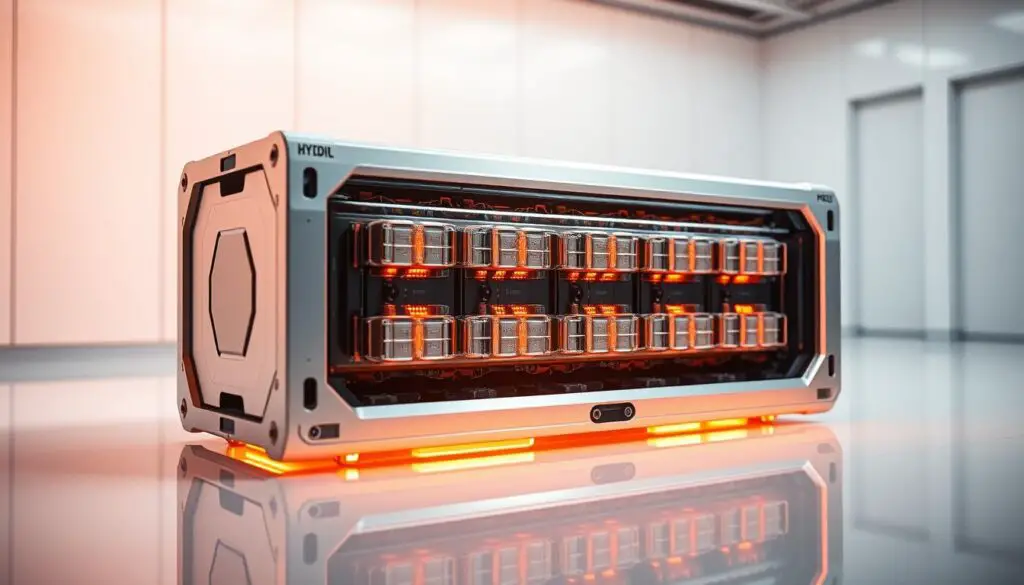
Plug-in hybrid vs. fully electric: why costs are higher
Plug-in hybrid systems add a larger high-voltage pack plus charging electronics and more complex controls. That increases diagnostic time and the scope of any work versus a conventional hybrid.
Eight-year/100,000-mile warranty and what it covers
Most high-voltage packs are covered for eight years or 100,000 miles. The warranty helps protect owners against defects or unexpected degradation, but coverage depends on proper maintenance and exclusions for non-approved modifications.
Designed to last the vehicle’s lifetime: when replacement is needed
The propulsion pack is engineered for long life and typically does not require replacement during normal ownership. Many apparent pack issues turn out to be software, charging, or 12V-related problems that a specialist can isolate.
- HV service requires trained technicians and safety protocols.
- Owners should budget differently for high-voltage systems than for accessory cells.
- For XC40 Recharge and other Recharge models, the 12V remains essential for systems while the HV pack supplies drive power.
Pro tip: Schedule a specialized assessment before committing to major HV work. Often the right fix is a software update, charging check, or 12V service rather than a full pack intervention.
When You Need a New Battery: Symptoms, Diagnosis, and Safety
Small symptoms can signal an imminent need for service on the car’s 12V system.
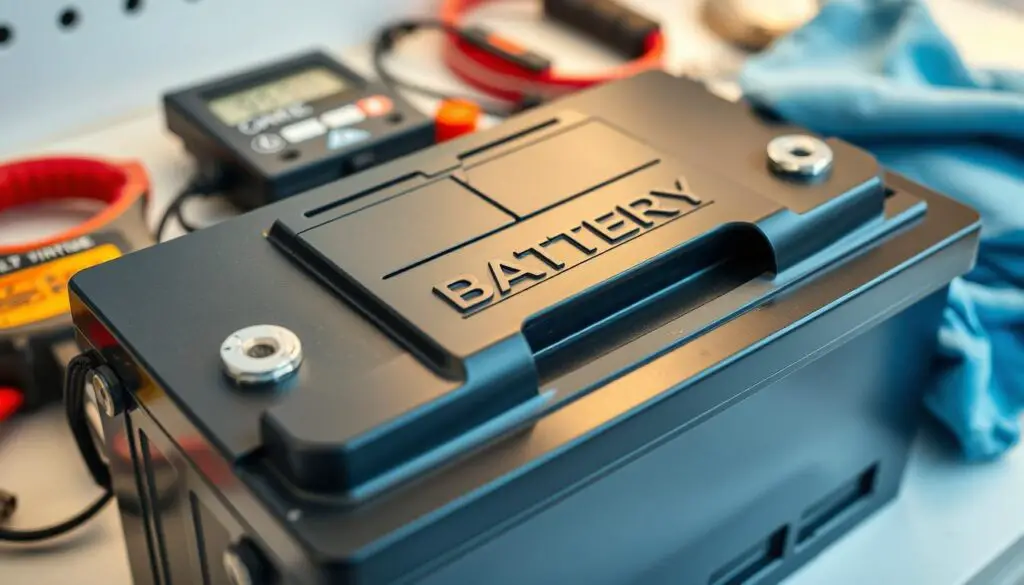
Common signs include slow or no engine crank, dim interior or head lights, and rapid clicking when some charge remains.
Infotainment black screens, door lock failures, alarm malfunctions, or a dashboard Start/Stop Service Required message may point to an auxiliary cell or wiring issue.
Professional testing before any replacement
Always get a full starting and charging test. A technician will recharge a weak unit and retest it.
They will also check alternator output, cable connections, parasitic draw, and voltage drops to avoid unnecessary parts purchases.
| Symptom | Possible cause | Professional check |
|---|---|---|
| Slow crank | Low state of charge or poor terminal contact | Load test and cable inspection |
| Dim lights / flicker | Low charge or charging system fault | Alternator output and voltage under load |
| Intermittent electronics | Parasitic draw or failing module | Parasitic draw test and software scan |
| Warning lights while driving | Charging system failure risking stall | Drive test and immediate repair advice |
Safety note: Do not keep driving with a known charging fault; the car may stall and create a hazard.
Cold or hot climates and many short trips shorten useful years and speed failure. Both conventional and hybrid vehicles still rely on a healthy 12V system to boot computers and manage critical functions.
Next step: Book a quick diagnostic to confirm health and get a clear plan for repair or battery replacement. If you suspect a dead unit, read how to spot a dead Volvo battery.
What’s Included in a Volvo Battery Replacement Service
A comprehensive service covers diagnostics, safe removal and installation, and any required system updates.
Parts, installation, BMS considerations, and auxiliary checks
Technicians start with a full starting and charging test to confirm the need for a new unit.
Safe handling means disconnecting the negative cable first and reconnecting the positive first after install.
Many models require BMS registration or a reset so the charging system correctly learns the new cell.
OEM vs. aftermarket: fitment, performance, and longevity
Using an OEM-spec part that matches original ratings helps avoid under- or overcharging and protects warranty coverage.
Aftermarket options can save money but may change charging behavior and shorten service life if ratings differ.
Auxiliary checks: Inspect start/stop cells and replace them during the same visit if weak to prevent recurring warnings.
| Service Step | What it includes | Why it matters |
|---|---|---|
| Diagnostics | Starter, alternator, and parasitic draw tests | Prevents unnecessary part swaps |
| Removal & Install | Disconnect negative first; reinstall positive first; secure mounting | Protects ECUs and avoids voltage spikes |
| BMS / Registration | Software reset or learning procedure | Ensures correct charging profile and life span |
| Auxiliary check | Inspect/replace start/stop cell if present | Avoids repeated service visits and warnings |
Customers receive the new replacement battery, installation labor, system testing, and a printout of results with maintenance recommendations.
Model-Specific Guidance: XC40, XC90, and Recharge Pricing Insights
Different XC40 and XC90 trims bring unique access points and electrical loads that shape service needs. This brief guide highlights where differences matter and what owners should expect for time and price.
XC40 and XC40 Recharge: 12V vs. high-voltage considerations
The XC40 uses a 12V unit sized to match trim and accessory load. OEM fitment ensures reliable cold cranking and accessory performance.
For the xc40 recharge, the high-voltage pack handles propulsion and is covered by an eight-year/100k-mile warranty. The small 12V still needs periodic attention and possible replacement during ownership.
XC90: higher electrical loads and auxiliary units
The volvo xc90 often has more luxury features and may include an auxiliary start/stop cell. That can increase parts selection and labor time.
Labor time, placement, and service impact
Batteries located under seats, in the trunk, or in wheel wells add disassembly time and affect the final price to replace. Recharge and plug-in hybrid models require safety lockouts and software checks before work begins.
Proper service preserves range, smooth drivability, and resale value. Schedule work with technicians experienced on these models for accurate diagnostics and efficient turnaround.
Conclusion
Strong, a clear estimate starts with a short diagnostic to confirm the root cause and avoid needless parts or labor.
Key takeaway: your volvo battery replacement estimate hinges on model, equipment, placement, and whether an auxiliary cell also needs attention.
A pro test separates actual repair from alternator, wiring, or software issues and yields an itemized price and timeline. OEM parts and expert installation protect electronics and extend service life.
Electrified models add safety steps; high-voltage packs are built for long life and carry solid warranty coverage. Book service today to get precise pricing, quick testing, and same-day installation where possible.
Request your detailed quote and review parts, warranty, and maintenance tips before you pay. For more on upkeep and service pricing, see our service & maintenance guide.
FAQ
What factors influence the final price for a Volvo battery replacement?
Several things affect the final price: your model and year, whether the vehicle uses a 12V auxiliary battery or a high-voltage pack, how accessible the battery is (under seat, trunk, wheel well, or engine bay), labor time for programming the battery management system, and whether parts are OEM or aftermarket. Hybrid and plug-in hybrid systems add complexity and testing, which raises service time and price.
How much should I expect to pay for a 12V battery service and parts?
Typical pricing varies with location and shop, but a 12V service usually covers the cost of the battery, installation, and basic testing. Expect a lower range for standard cars and a higher range for models with hard-to-reach batteries or additional programming. Always ask for a written estimate that breaks down parts and labor.
When would I need to replace both the main and auxiliary start/stop batteries?
You might replace both when the vehicle shows multiple electrical issues or when diagnostics show degraded capacity in each battery. Start/stop systems and vehicles with high accessory loads can stress both packs. Technicians often test both to confirm which units truly need replacement to avoid repeat service.
Why are high-voltage pack replacements for PHEVs and EVs more expensive?
High-voltage packs contain many cells, complex cooling and monitoring systems, and require specialized handling and diagnostics. Parts are pricier and labor requires certified technicians with safe procedures. Those factors make PHEV and fully electric pack replacements significantly costlier than a standard 12V swap.
What does the eight-year/100,000-mile battery warranty cover for hybrids and electrics?
That warranty generally covers defects in materials and workmanship and significant capacity loss within the period. Coverage specifics vary by model and region, so check your owner’s manual and warranty documents for exact terms, prorated rules, and required service procedures.
Aren’t high-voltage packs designed to last the vehicle’s lifetime? When is replacement actually necessary?
Packs are engineered for long service life, but factors like high mileage, extreme climate exposure, frequent deep discharges, or cell failures can prompt replacement. Replacement becomes necessary when capacity loss affects range or when diagnostics detect cell faults or thermal issues that can’t be repaired through module-level fixes.
What symptoms indicate I need a new battery?
Look for hard starts, unusually dim headlights, repeated warning lights on the dash, infotainment glitches, frequent need to jump-start, or a car that won’t hold charge. Hybrid and plug-in models may show reduced electric range or error messages related to charging and battery health.
Should a professional test the starting and charging system before swapping the battery?
Yes. Technicians should perform a full diagnostic of the starting and charging system, battery state of health, and BMS communication. Testing prevents unnecessary replacements and identifies root causes like alternator or parasitic draw issues that can prematurely degrade a new battery.
What’s included in a manufacturer-level battery service?
A comprehensive service includes the new battery (OEM or specified equivalent), installation, BMS registration or programming, charging system checks, and inspection of related components. For hybrids, technicians also verify high-voltage system integrity and may perform balancing or module-level repairs if available.
Should I choose OEM-specific batteries or aftermarket options?
OEM units match original specifications and BMS compatibility, reducing programming headaches and warranty concerns. Quality aftermarket options can be less expensive but may vary in fit, performance, and long-term longevity. Ask the service center about warranty, testing, and compatibility before deciding.
Are there model-specific considerations for the XC40 and XC40 Recharge?
Yes. The XC40 uses a 12V auxiliary battery like many internal-combustion models, while the XC40 Recharge also has a high-voltage traction pack. The 12V swap is straightforward, but the Recharge’s high-voltage system requires specialized techs, safety procedures, and possibly longer diagnostic time, affecting price and service time.
How do XC90 electrical loads affect battery service needs?
The XC90 often carries more electrical accessories and features, which can increase strain on the auxiliary battery and may necessitate auxiliary replacements more often. Its packaging can also place batteries in tighter spaces, increasing labor time for access and programming during replacement.
How does battery placement affect labor time and pricing?
Location matters. Under-seat or in-trunk batteries are typically easier to access than those buried under trim or in the engine bay, reducing labor. If technicians must remove seats, panels, or use calibration tools, labor time and therefore price will increase.
How does proper battery service support range, drivability, and resale value?
Correct diagnosis, OEM-quality parts, and proper BMS programming maintain electrical performance and reliability. For electrified models, a healthy pack preserves range and drivability. Detailed service records and recent battery work can also boost resale value by reassuring buyers about long-term ownership costs.

